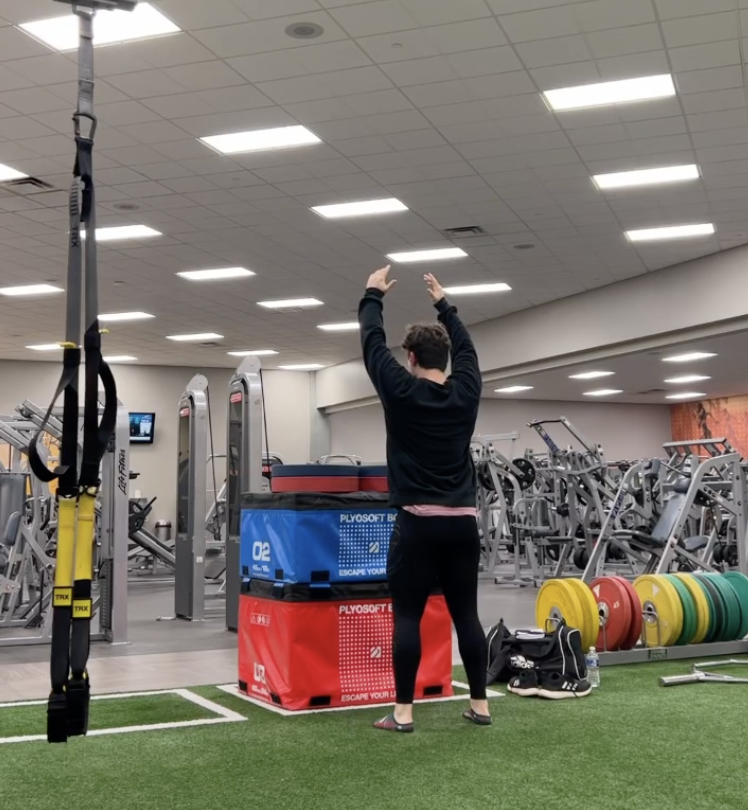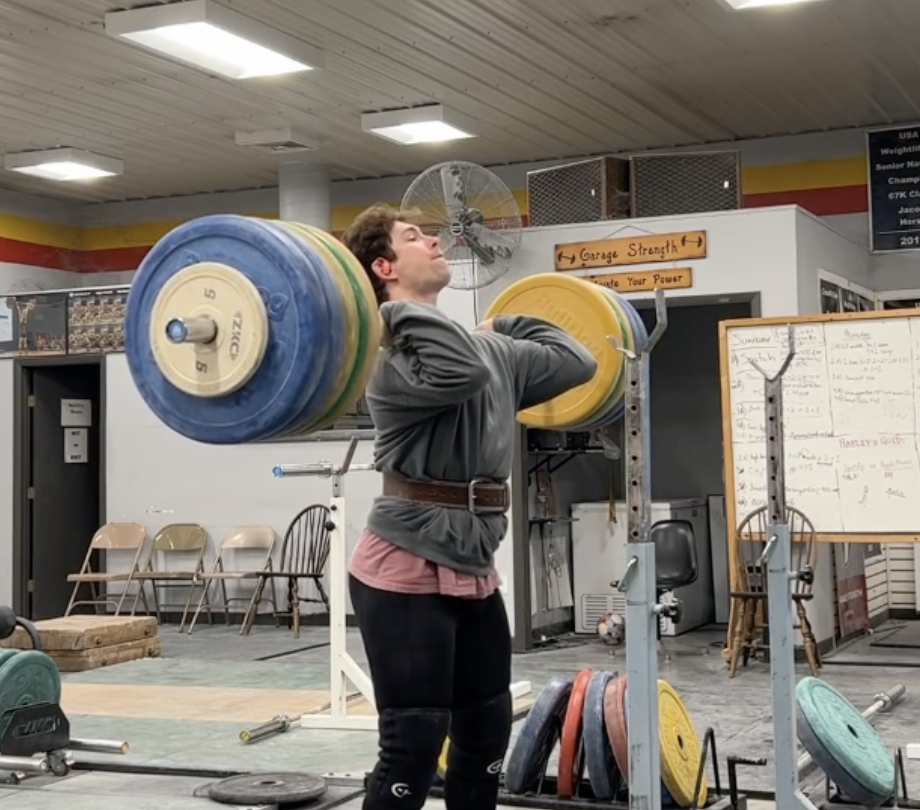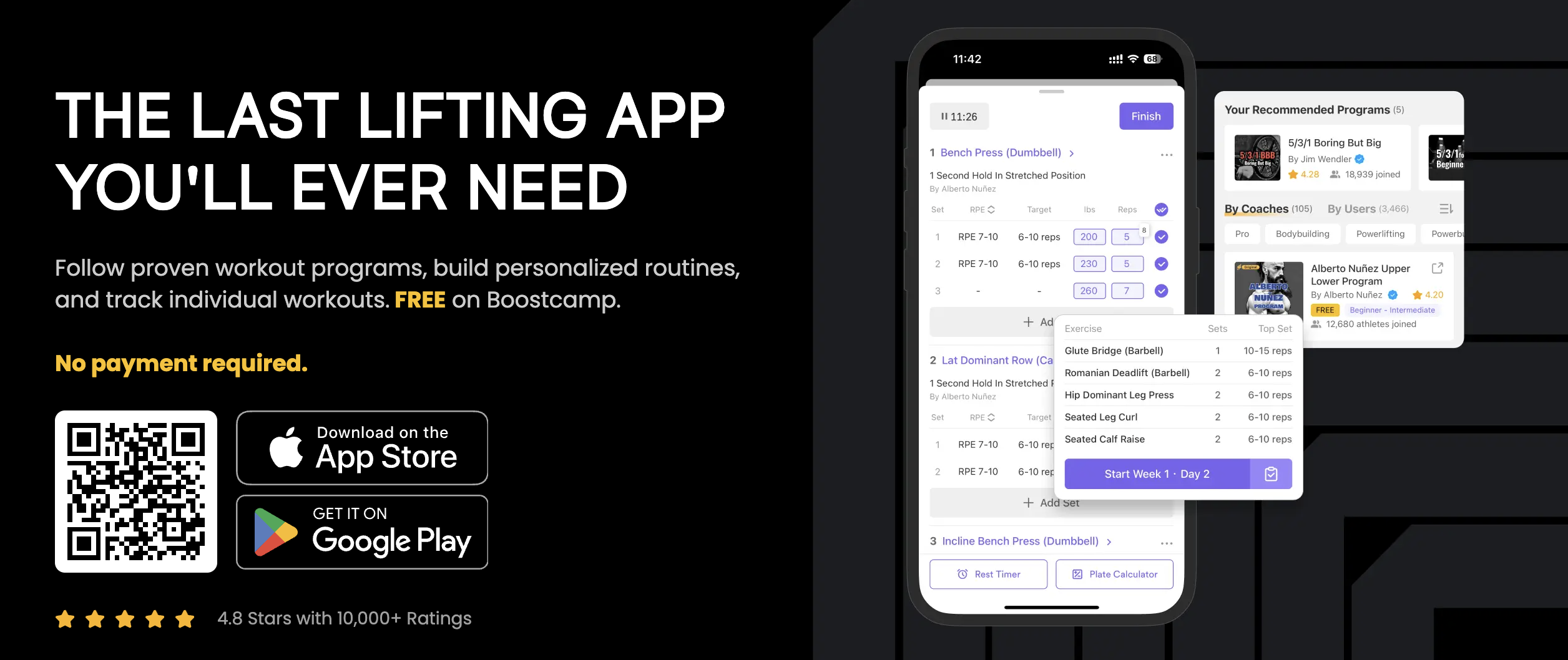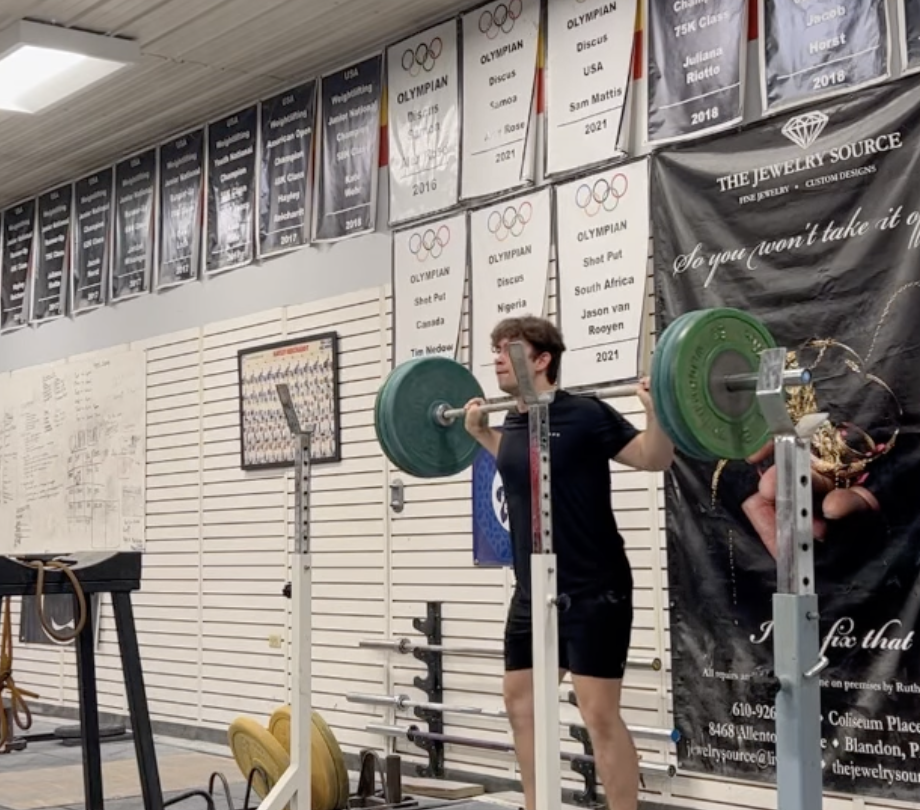Strategies for Training around an Injury
Written by The Boostcamp Editors
Overcoming Obstacles and Training Around an Injury
Injuries can be a pretty big and discouraging setback for any athlete or fitness enthusiast that is looking to make gains. Not to mention, when you suffer from an injury, most doctors will suggest taking time off of training around and treating the injury. While in some cases, this may be a correct diagnosis, there are many circumstances when you can train around the injury and not let it keep you from achieving your goals! With the right mindset, approach, training program, and knowledge, you can train around your injury and come back stronger than before, and most importantly you will not lose your hard earned muscle and strength gains!
Our team at Boostcamp is going to discuss everything you need to know about training with an injury, from identifying the types of workout injuries and assessing their severity to adapting your training routine and choosing the right exercises with an injury. We also cannot forget to talk about the role of nutrition and rest in recovery, providing optimal diet tips for healing, and emphasizing the value of quality sleep. Lastly, we will cover staying active and positive during recovery with creative workout ideas for injured athletes and how to stay motivated despite an injury.
So let's dive in!
Disclaimer: The Boostcamp Team are not medical professionals, all decisions you make are on your own!
Understanding Your Injury
Recognizing the nature of an injury is crucial for proper recovery. Understanding the specific injury aids in planning an effective rehab strategy and making informed decisions. A comprehensive understanding of the injury is essential to aid recovery and tailor rehab techniques. Whether it's a pectoral tear from going too heavy on the bench press, or maybe shoulder injury from overhead pressing improperly or just heavy weight training in general, or even knee pain from improper form during squats, knowing the injury type is the most important thing. Familiarizing yourself with different types of injuries, from acute to chronic, helps in adopting the best way to manage them.
Types of Workout Injuries
Understanding workout injuries is crucial for athletes, as differentiating between acute and chronic injuries assists in tailored treatment. Muscle strains, tendon injuries, and acute muscle soreness are common. Distinguishing lower from upper body injuries aids in specific rehab, and identifying the injury type and severity is essential for appropriate recovery. Recognizing a wide range of workout injuries is key for timely healing.
Identifying Severity of Your Injury
When dealing with an injury, it's crucial to determine its severity to plan the most effective rehab strategy. Assessing persistent pain, swelling, or soreness is essential for personalized recovery. Recognizing the severity of your workout injury enables tailored rehab measures, ensuring that you can adapt without setbacks. For example, if your arm is in a sling and completely immobilized, then hitting biceps and triceps for that arm may be difficult, and even other muscle groups like back and chest will be difficult and can have a negative affect. However, if it is not immobilized and you can put weight on the injured area, you may be able to train around it.
The same methodology applies to leg day training. If you are in a boot or on crutches, with one or both legs being pretty much immobilized, then you probably will have a harder time doing certain exercises, and it can be detrimental to try and work through it.
This understanding is the foundation for planning an effective rehab strategy that caters to the specific needs of your injury.
Adapting Your Training Routine

Changing around your training routine involves modifying it to accommodate your injury, considering the best way to tailor your regime safely. It's essential to adjust for effective rehab and injury management while incorporating different ways to align with your injury for safe training. Whether it's a shoulder injury or knee pain, adjusting your training routine is the most important thing for safe progress. Using heavy weights and free weights in a different way helps in ensuring you are training safely despite an acute or chronic injury.
Choosing the Right Exercise With an Injury
When dealing with an injury, it's crucial to select exercises that support your healing process and do not aggravate the injured area. Opt for exercises that aid in healing without straining the injury, while maintaining the best range of motion that you can for the affected area. Getting blood pumping to the injured area can be a pretty beneficial thing depending on the severity.
Furthermore, choose exercises that promote strength training in a way that respects your injury. By doing so, you can ensure that your workout routine contributes to your recovery without causing further harm.
Importance of Proper Form and Lighter Weights
When training around an injury, the most important thing to remember is to emphasize proper form to prevent aggravating your injury. Prioritize proper form to avoid exacerbating the injury, and consider using lighter weights with good form, rather than throwing around heavy weights and hitting one rep maxes like you are preparing for a powerlifting meet, as getting blood to the injured area and just keeping everything flowing helps with injury management. Focusing on proper form and lighter weights not only supports your rehab but also plays a crucial role in injury-safe training. It’s a great way to ensure that you're working out in a way that doesn't put too much strain on your body while still allowing you to stay active and make progress.
The Role of Nutrition and Rest in Recovery
Proper nutrition is essential for the healing process of an injury as it provides the body with the necessary nutrients to repair and regenerate tissues. Similarly, adequate rest plays a crucial role in effective recovery by allowing the body to divert energy towards healing. Integrating nutrition and rest is pivotal for injury rehabilitation, as they work together to support the recovery process. The right balance of nutrition and rest can significantly contribute to injury healing and overall well-being.
Optimal Diet for Healing
The most important thing in aiding injury recovery is to opt for a diet rich in nutrients. Choosing a diet that promotes healing and injury recovery can accelerate the healing of your injury. A nutritionally balanced diet supports the healing process of injuries, and it's the best way to ensure that you are providing your body with the necessary fuel for the healing process. Incorporating a diet that aids in the effective healing of your injury is a good idea. Following an optimal diet can significantly contribute to the effective healing of your injury.
The Value of Quality Sleep
Aside from diet and training, adequate sleep plays a significant role in injury rehabilitation, being instrumental in the recovery process. Prioritizing quality sleep supports the healing of an injury and is indispensable for effective recovery. The body generates the most growth hormone and testosterone while sleeping, which are both essential for repair and growth. That being said, ensuring quality sleep is vital for injury recovery and management, making it the most important thing for your body's healing process. Quality sleep also impacts other aspects of your health, making it the best way to support your overall well-being during injury recovery.
Staying Active and Positive During Recovery

Maintaining a positive outlook and engaging in light physical activity are crucial during injury recovery. Staying proactive throughout the rehabilitation process accelerates recovery and supports overall well-being. It’s essential to focus on optimistic thoughts and engage in activities that don't aggravate the injury. While it’s important to stay active, it's equally important to listen to your body and not push too hard. This balanced approach promotes physical and mental healing, aiding in a faster recovery.
Creative Workout Ideas for Injured Athletes
Exploring alternative training methods like resistance bands can effectively work different muscle groups without straining the injured area. For example, with a lower back or leg injury you may have to look at changing up your lower body training. Instead of squats you may focus on leg press, or even the hack squat and leg extensions. When you are focusing on your hamstrings, you may have to do leg curls rather than stiff leg deadlifts.
For upper body training depending on the injury, you may have to switch out exercises as well. Compound movements such as pull-ups and barbell bench press could become difficult, and you would need to train around them.
How to Stay Motivated Despite an Injury?
Maintaining motivation during an injury can be challenging, but setting achievable short-term fitness goals and focusing on nutrition and rest can help. Seek personalized guidance from a physical therapist or sports medicine professional and engage in enjoyable activities that don't aggravate your injury. Use this time to expand your knowledge of training methods, proper form, cardio, or nutrition for a stronger comeback.
Training Programs
Following a well-rounded workout plan can truly help make sure that you do not get too far off track when training around an injury. Finding a program that helps provide ideas for alternative exercises is ideal in making sure that you are still progressing and pushing your body to the limit, forcing growth, without overdoing it and injuring yourself even more.
That being said, check out the Boostcamp App for over 50 FREE programs that are written by some top notch coaches. But if you do not want to choose from a pre-written program, that is no problem, because you have the option to even create your own workout program using the Program Creator feature. Boostcamp also allows you to track progress, so you know how to adjust each week.
Be sure to follow Boostcamp on Instagram and subscribe on YouTube!
Conclusion
In conclusion, it's important to remember that injuries are a part of any active lifestyle, these things unfortunately happen, especially if you are really pushing yourself as hard as you can. However, that doesn't mean you have to stop training entirely. By understanding the nature and severity of your injury, you can adapt your training routine to accommodate it and choose exercises that work around your injury and focus on maintaining proper form with lighter weights.
Additionally, nutrition and rest play a crucial role in recovery. Follow an optimal diet for healing and prioritize quality sleep to aid in the healing process. Finally, staying active and positive during your recovery is key. Get creative with modified workout ideas, find a good program (we recommend checking out the Boostcamp App) and find ways to stay motivated despite your injury. Remember, setbacks are temporary, and with the right approach, you can continue your training journey.


